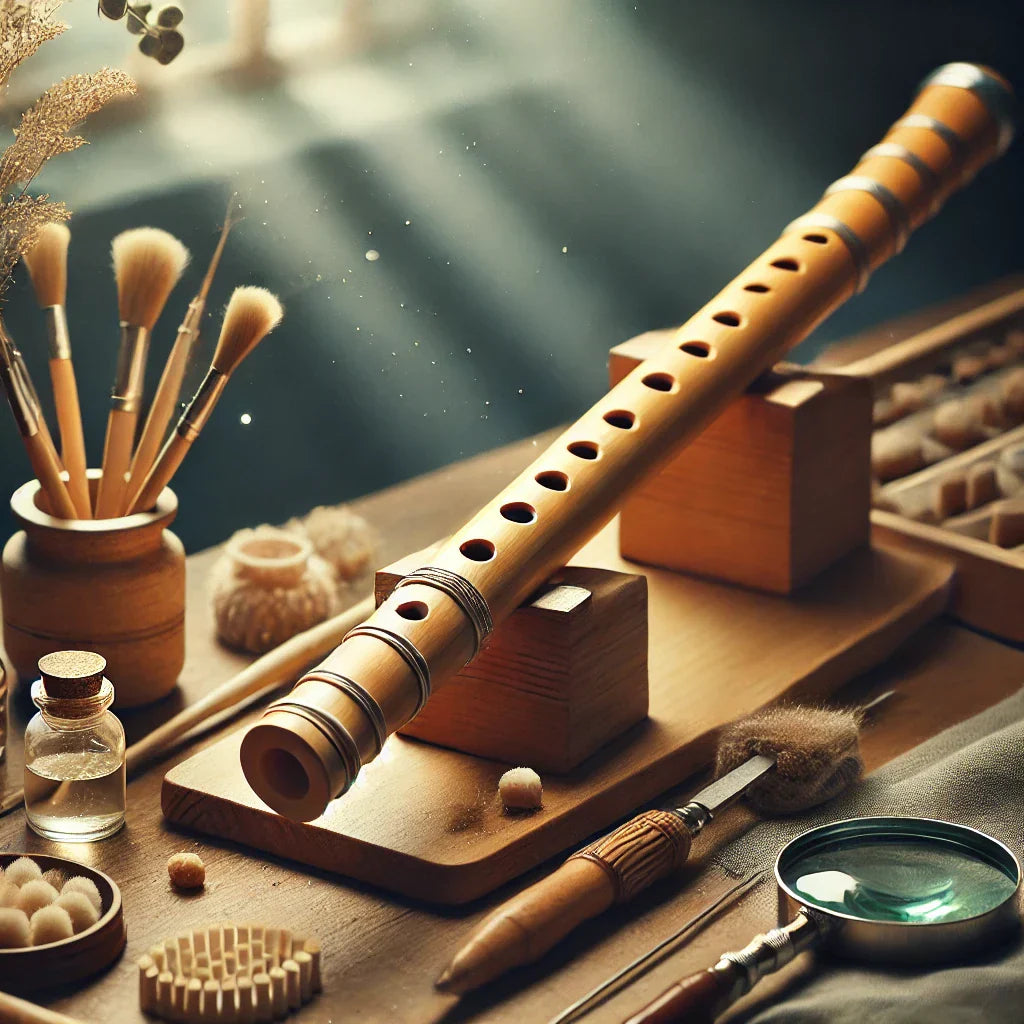
The Art of Maintenance
The Art of Maintenance
First of all: To keep your bansuri in good shape and ensure longevity, regular maintenance is essential. Here is a comprehensive guide to help you care for your bansuri and make it a lifelong companion.
Caring for your bansuri is indeed very important and if done correctly it can stay in great shape for years to come. Since the bansuri is made of bamboo, it's important to remember that it’s a natural material, so it reacts to its environment. To keep it sounding beautiful (and prevent cracks) there are a few simple things you can do.
First off, let’s talk about weather. Bamboo doesn’t like extremes, so keeping your bansuri away from direct sunlight, high heat, or freezing temperatures is a must. Too much humidity or dryness can also be harmful. Remember to always give your flute some time to warm up to room temperature before playing.
If you live in a very humid area, you have to clean your flute often to prevent mold and bacteria building up inside the flute.
If you’re in a very dry climate, consider using a humidifier or a small humidification pack where you store your flute. You might want to consider oiling the inside of your flute once in a while to prevent it from becoming too dry and eventually crack. Mustard oil, sesame oil and almond oil works great. Use the same technique as when you clean your flute, i.e., a cloth and a stick, but apply 2-3 drops of oil on the cloth before inserting it in the flute. Rub it gently but thoroughly to make sure you're oiling the entire inside. Once every month or two during the dry season (e.g., winter in Northern Europe) should do the trick, depending on your climate.
Cleaning your bansuri after each session is super important. Moisture from your breath can build up inside and create the perfect environment for mold and bacteria to grow. We wouldn't want that, right? Make sure to use a soft cloth wrapped around a cleaning stick to gently wipe the inside of your bansuri once you're done playing. bansuri.shop's cleaning kit is perfect for that.
For the exterior, just use a dry cloth. You can also apply a few drops of oil (such as mustard, sesame, or almond) to your hands and gently rub it onto the flute to keep the flute shiny and moisturized.
Storing your bansuri correctly is also important to prevent any accidents. After playing your flute, ensure it is placed in a safe spot to allow it to breathe and dry from the moisture created while playing. Storing it vertically is the most optimal method. Once dried it should be kept in a case or somewhere safe. Don't leave it on the floor or on a table.
In case of any crack
I also want to be clear that even with the best care, since bamboo is completely natural, the flute can develop cracks. If you see (or hear) a crack developing - stop playing immediately, notice where the crack is and put the flute aside. When you play, your warm and moist breath makes the flute expand, causing the crack to open. And we wouldn't want it to open more than necessary. When the flute has rested for at least 2 hours, it is time to take care of the wound. We need to bind the flute to make sure the crack doesn't spread. What you need: strong cotton thread, preferably waxed, or polyester (you can buy it at your local hobby store). Then look up a YouTube video explaining how to thread the flute correctly. Tighten it hard. Possibly some super glue on the edges of the threading just to keep it in place. That's it.
Storing your bansuri properly can make a huge difference in its longevity. Always keep it in a protective case to shield it from dust, moisture, and accidents.
Taking care of your bansuri is indeed important but it doesn't demand a lot. With a little attention and care, your bansuri will reward you with years of peace and joy.
/Linus Lundquist, founder bansuri.shop
